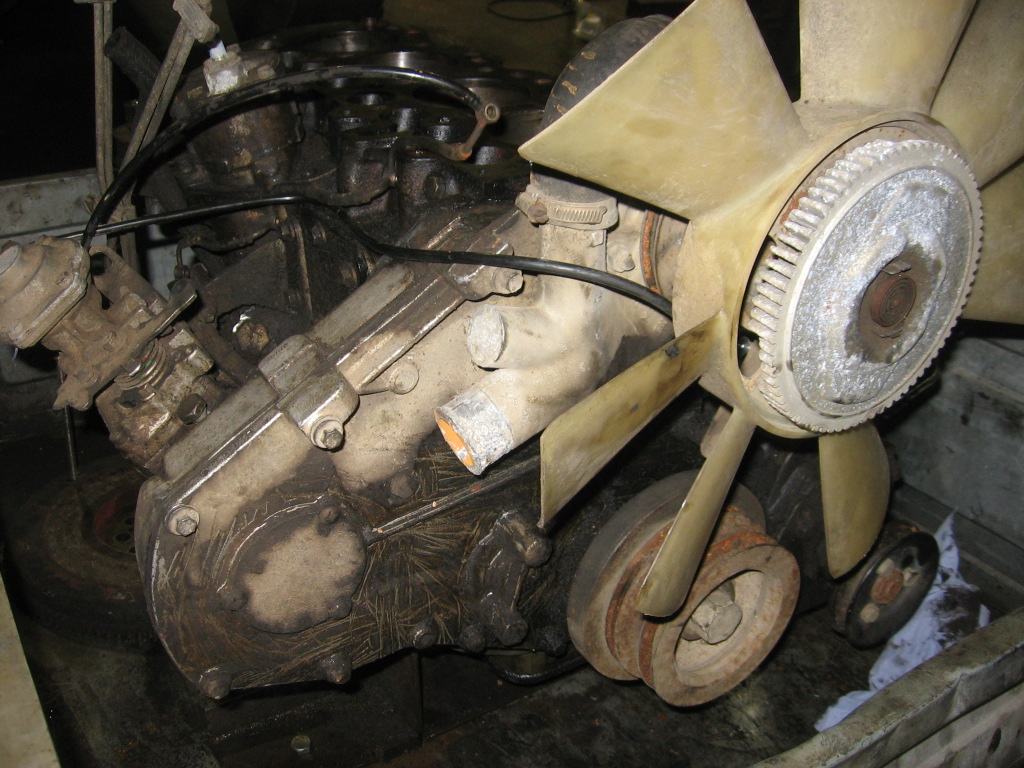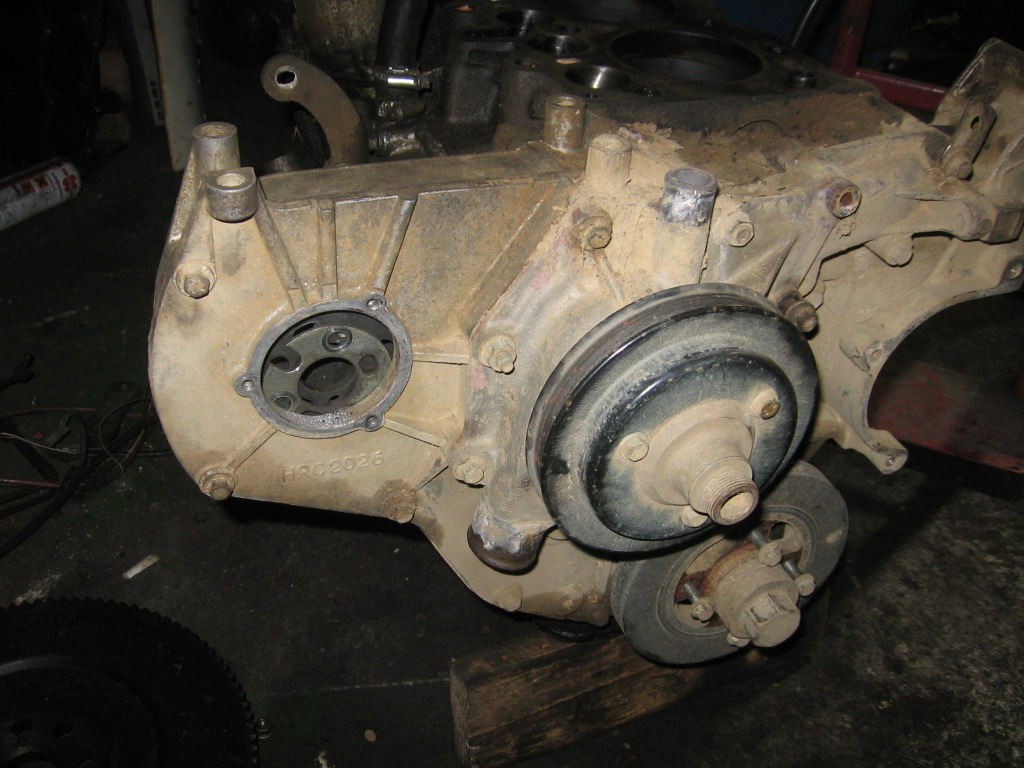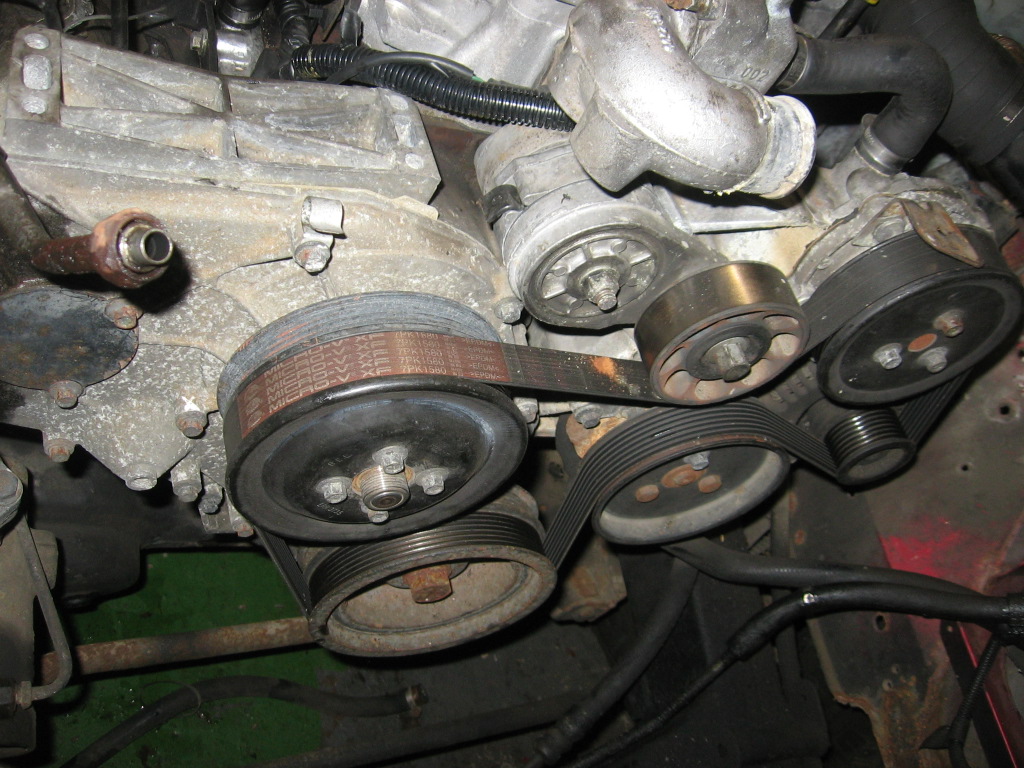![]()

The TDi Pages
Comprehensive
guide to the 200 and 300 TDi series of engines ![]()
![]()
Here you will find a comprehensive guide to the ever-popular 200 and 300 TDi engines, used by Land Rover in the Discovery, Defender and Range Rover Classic from 1989 onwards. This guide covers history, specifications, known weaknesses, maintenance and rebuilding. Hopefully people will find it useful.
The TDi family - a short history
The 200 TDi engine made its first appearance at the launch of the Discovery in 1989. It was Land Rover's third attempt at putting a turbodiesel engine into its range. The Ninety and One Ten had gained a turbodiesel option in 1986, with a beefed-up version of the old 2.5 diesel which could trace its origins back to the Series One. It sold well, but even though it used a small turbo running at fairly low boost pressure to give just 15 bhp more than the non-turbo version, the power increase in the '19J' engine led to problems with pistons and cylinder blocks cracking, sometimes at very low mileages. Fuel economy was also poor compared to the best of the Japanese competition. Meanwhile (and following the failure of 'Project Iceberg', an attempt to dieselise the Rover V8) the Range Rover had received a completely different 2.4 litre engine bought in from VM of Italy. This was more refined and powerful than Land Rover's own turbodiesel, but was expensive to buy in and soon developed a reputation for eating head gaskets. With the new Discovery scheduled for launch in 1989 Land Rover needed a powerful, reliable turbodiesel, and fast.
Hence the 200 TDi, known within Land Rover as 'Project Gemini'. The new engine was designed to be machined using the same tooling as the old 2.5 turbodiesel, so the basic dimensions and component layout remained the same. A number of major components were carried over including the crankshaft and camshaft. However the cylinder head was all new, cast in aluminium rather than iron, and using direct injection. This had been common on large commercial vehicles for many years but was still fairly rare on smaller diesels in 1989. It offered easier cold starting, lower emissions and greater fuel efficiency, at the expense of increased engine noise. To overcome the block cracking issue Land Rover bolted a large aluminium strengthener between the block and the sump.
In its original Discovery configuration the 200TDi had the injection pump mounted fairly high up on the right hand side of the engine and the turbo mounted low down on the left hand side. In 1990 the Ninety and One Ten also received 200 TDi power, with the range being renamed 'Defender' to mark the change. The Defender version of the engine had the injection pump mounted much lower, while the turbo was high up above the inlet manifold, in the same position as the old 19J turbodiesel. Manifold and exhaust changes meant that the Defender version produced around 4 bhp less than the Discovery (107 versus 111 bhp). However the core components of the engine - block, crank, pistons, camshaft and cylinder head - were identical across the two versions.


200 TDi timing cases compared - Defender on left, Discovery on right
The 200 TDi proved very durable and economical, and the new Discovery sold in large numbers. However the 200 was a rough, noisy old thing compared to many of its competitors. It was also quite expensive to manufacture, not least because of the cast aluminium strengthener, and having to make two quite different versions of the same engine didn't help. Enter the 300 TDi - identical cylinder capacity and power output to the 200, but comprehensively redesigned to make it smoother, quieter and cheaper. Barely a single component was carried over from the 200 to the 300. Changes to the Discovery to accommodate the new engine were minimal, but the Defender needed to be extensively reworked to achieve Land Rover's aim of being able to use the exactly the same engine in both vehicles. The gearbox and transfer box were moved forwards (to the same position as the Defender V8, allowing V8 seatbox, floors, transmission tunnel, propshafts etc to be used). In conjunction with a much longer bellhousing, the engine now sat a good six inches further forward in the engine bay.
The 300 TDi had an all new block, internally strengthened to allow the cast strengthener to be dumped. All the external ancillaries were moved around: the oil filter housing now occupied the space previously taken by the offside engine mount, a piston-type vacuum pump was fitted where the fuel lift pump had been, and the engine mounting brackets (a totally new design) were moved much further back along the block. The cylinder head was redesigned with recessed combustion chambers and a modified valve rocker assembly. At the front, a single flat ribbed 'serpentine' drive belt replaced the 200's two V-profile belts, the water pump was moved to a much higher position (and made much smaller) with the power steering pump just below it. Two-stage injectors were used to reduce combustion clatter.
The 200 TDi Discovery had been available with automatic transmission but it wasn't exactly quick. For later 300 TDi Discos with the autobox, Bosch EDC 'fly by wire' throttle control was used, combined with changes to the fuelling profile and turbo boost, giving useful increases in power and torque. These engines were designated 23L.

300 TDi front end showing serpentine belt and tensioner (top centre)
The 300 TDi was available on the UK market until 1998, when new EU emission regulations led to it being replaced by the all-new TD5. It remained available for export and military markets until 2006. The Defender 'Wolf', purchased in large numbers for the British Army from 1996 onwards, used the 300 TDi, and these vehicles are expected to remain in service for a long time yet. A few late export-market 300 TDi Defenders have turned up back in the UK as personal imports.
Even then, the TDi story does not end. A Brazilian company, International Motors, acquired the right to manufacture a 2.8 litre version of the 300 TDi. A number of these engines have been imported into the UK for retrofitting to older Defenders, and the engine remains available, now with variable geometry turbo kicking out 135 bhp and enough torque to pull down a house.
Specifications
|
200 TDi Defender |
200 TDi Discovery |
300 TDi Manual |
300 TDi Automatic |
|
|
Capacity (cc) |
2495 |
2495 |
2495 |
2495 |
|
Bore (mm) |
90.47 |
90.47 |
90.47 |
90.47 |
|
Stroke (mm) |
97.00 |
97.00 |
97.00 |
97.00 |
|
Power (bhp) |
107 @ 3900 rpm |
111 @ 4250 rpm |
111 @ 4250 rpm |
122 @ 4250 rpm |
|
Torque (lbf. ft) |
188 @ 1800 rpm |
195 @ 1800 rpm |
195 @ 1800 rpm |
210 @ 1800 rpm |
|
Compression ratio |
19:1 |
19:1 |
19:1 |
19:1 |
|
Boost pressure psi |
12 |
12 |
12.5 |
15 |
Next page - known weaknesses and issues - click here
Page 3 - repair and maintenance - click here